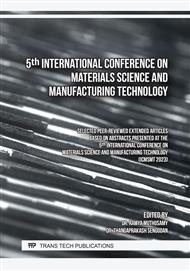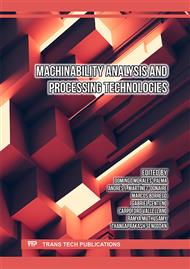p.25
p.35
p.45
p.57
p.67
p.77
p.87
p.101
p.109
An FEM-ANN Based Analysis of Cutting Force and Cutting Tool Deflection to Predict Tool Wear in Double Tool Turning Process
Abstract:
In the conventional turning process, cutting forces and cutting tool deflection plays an important role in tool wear mechanism. The cutting tool is subjected to uneven wear due to heavy cutting forces. This further leads to shear deformation of the tool which ultimately affects the surface texture of the workpiece. In this paper, an experimental setup is designed and fabricated which can hold rigidly the two cutting tools namely, the front and rear tool in opposite direction. Moreover, to check its robustness and feasibility, the numerical modelling of the experimental setup is performed using the experimental data. A total of nine simulation runs were performed according to the machining parameters used in the experimental study to check the accuracy of the Finite element model. Additionally, these experimental values of resultant cutting force were used to obtain the resultant deflection of both the cutting tools through simulation tests. Finally, the values of resultant cutting force and the resultant deflection of both the tools were predicted using Artificial Neural Networks (ANN) and compared to estimate the tool wear. It was found that the experimental results were in good agreement with the ANN predicted results.
Info:
Periodical:
Pages:
67-76
Citation:
Online since:
October 2023
Authors:
Price:
Сopyright:
© 2023 Trans Tech Publications Ltd. All Rights Reserved
Share:
Citation:



